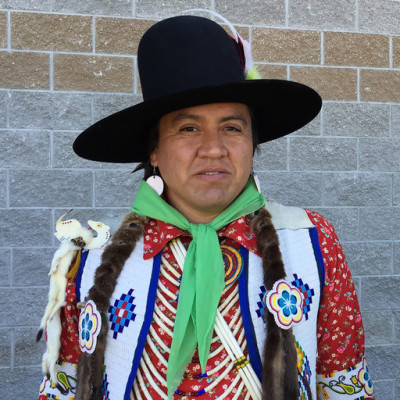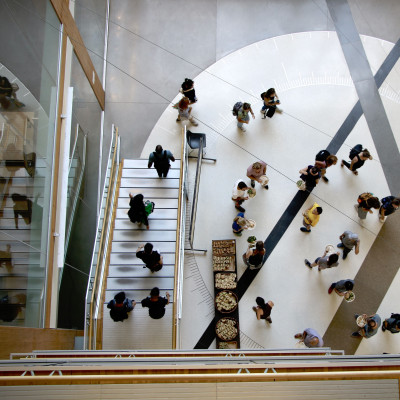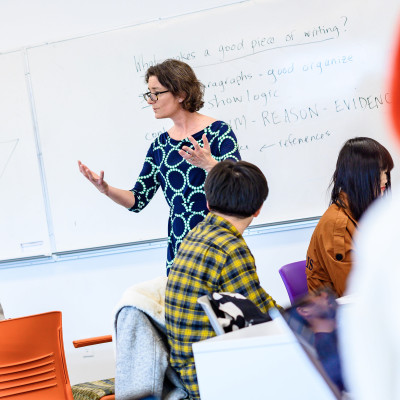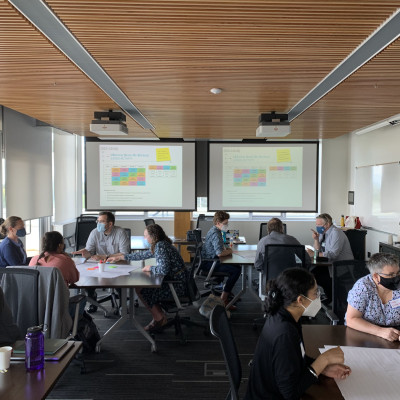News
Stay up-to-date with what's happening in EOAS
Join us for the March and Block Party for Climate - Sep 23
On this global day of action, Sustainabiliteens is hosting a march and a block party for #PeopleNotProfit and a Just Transition. The march calls for bold policy action, with a focus on Indigenous sovereignty and a just transition for workers. The following block party will be a communal climate action extravaganza, bringing community members together through discussion circles, tangible actions, free food, and live entertainment. The event will also spotlight transformative organizations, inspiring speakers, and local businesses. This community-based mass mobilization aims to bring people of diverse backgrounds and viewpoints together to learn, connect, share ideas, and take action toward a Just Transition. The objective of creating a more just and sustainable society is one that requires learning and collaboration on a large-scale; the block party format is an attempt to build this community of collaboration and to reinstill hope and joy in the movement, all while pressuring those in power to prioritize climate justice. If you would like to find groups at UBC attending the strike, reach out to @climatejusticeubc on Instagram!
WHEN: Friday, September 23rd, 2-6pm
WHERE: March begins at Coal Harbour Park and ends at Vancouver Art Gallery, where the block party takes place
UBC Indigenous Strategic Initiative Fund - upcoming projects involving EOAS Faculty
EOAS Assistant Professor Shandin Pete will be involved with three upcoming projects funded through UBC's Indigenous Strategic Initiative Fund.
The first project, on which Shandin is the principal applicant, will explore the development of an Indigenous Science Research Seminar/Course Series. The focus of this project is to gain a better understanding for interest in and sustainability of a future course(s) on Indigenous Science Research, ways of knowing and Indigenous philosophies of science in the Faculty of Science at UBC. Shandin and colleagues seek to explore the development of a special topics pilot course in Indigenous Science, which will leverage the science and Indigenous expertise of the applicants. They plan to design the course to capture the diversity of Indigenous thought and perspectives of the Indigenous scholars’ respective Faculties and their own communities research traditions.
Shandin is a co-lead on “Yeendoo Diinehdoo Ji’heezrit Nits’oo Ts’o’ Nan He’aa (After Our Time, How Will the World Be)", a project led by the UBC Climate Emergency team and UBC Sustainability Hub, which will support the coordination and mobilization efforts of the Vuntut Gwitchin Government (VGG) to meet ambitious climate emission targets through expanded research and the practical application of Indigenous knowledge and science to develop climate solutions. In addition, the project will identify and enhance opportunities to support VGG’s nation-building efforts to develop skills and competencies that responds to the communities' climate emergency. The project will also learn with and from Vuntut Gwitchin First Nation (VGFN) about ethical, respectful and reciprocal partnerships that respect and activate multiple ways of knowing and being on the land and support Indigenous-led climate action. Finally, the project will engage students in multi-disciplinary and collaborative research initiatives that are at the intersection of Indigenous rights and climate justice.
Shandin and colleagues have also proposed to co-host UBC’s Inaugural First Salmon Ceremony in full and equal partnership with the Nations whose territories comprise what is now known as Vancouver, British Columbia, Canada, as well as neighboring Tribes. This ceremony will create a remarkable on-campus opportunity for inter-cultural learning, for Indigenous and non-Indigenous peoples to come together in celebration, and Indigenous Peoples to revitalize this cultural tradition. The resurgence of these ceremonies is central to the revitalization of Indigenous food and cultural systems and healing for Indigenous Peoples. In the Pacific Northwest, salmon are central to Indigenous lives, well-being, and knowledges. Since time immemorial, Indigenous Peoples from California to Kamchatka have acknowledged the annual return of salmon through ceremony to practice gratitude for the gift of salmon. This ceremony is a vital act of witnessing and intergenerational knowledge transfer where salmon are honoured through story, song, and prayer, and the first salmon caught is prepared, divided, and shared with those in attendance. Following this feast, bones and remains are gathered, placed on cedar boughs, and returned to the sea to nourish the waters and give thanks. This ceremony has been violently interrupted through colonization, thus altering the sacred balance between people and waters, but Indigenous Peoples across the Pacific Rim are putting it ‘violently’ back in place (the latter violence refers to the great strength and sound with which these practices are returning and made visible).
Learn more about Shandin's work: https://www.eoas.ubc.ca/people/shandinpete
Listen to his podcast Tribal Research Specialist
Read his most recent publication: Tribal Perspectives on Preventing the Introduction of Zebra Mussels into Flathead Lake
Welcome to UBC EOAS! - Graduate Student Orientation Day
Welcome to UBC EOAS!
Over the past week we have welcomed around 45 new graduate students to our department, bringing our total grad cohort to a massive 178 students! (84 Canadian and 94 International).
On our Graduate Student Orientation Day last Wednesday, current graduate students and faculty members had the chance to meet and chat to the new students at a lunch in the atrium (shown).
We are looking forward to getting to know you all better, and excited to have you as the newest members of our Department!
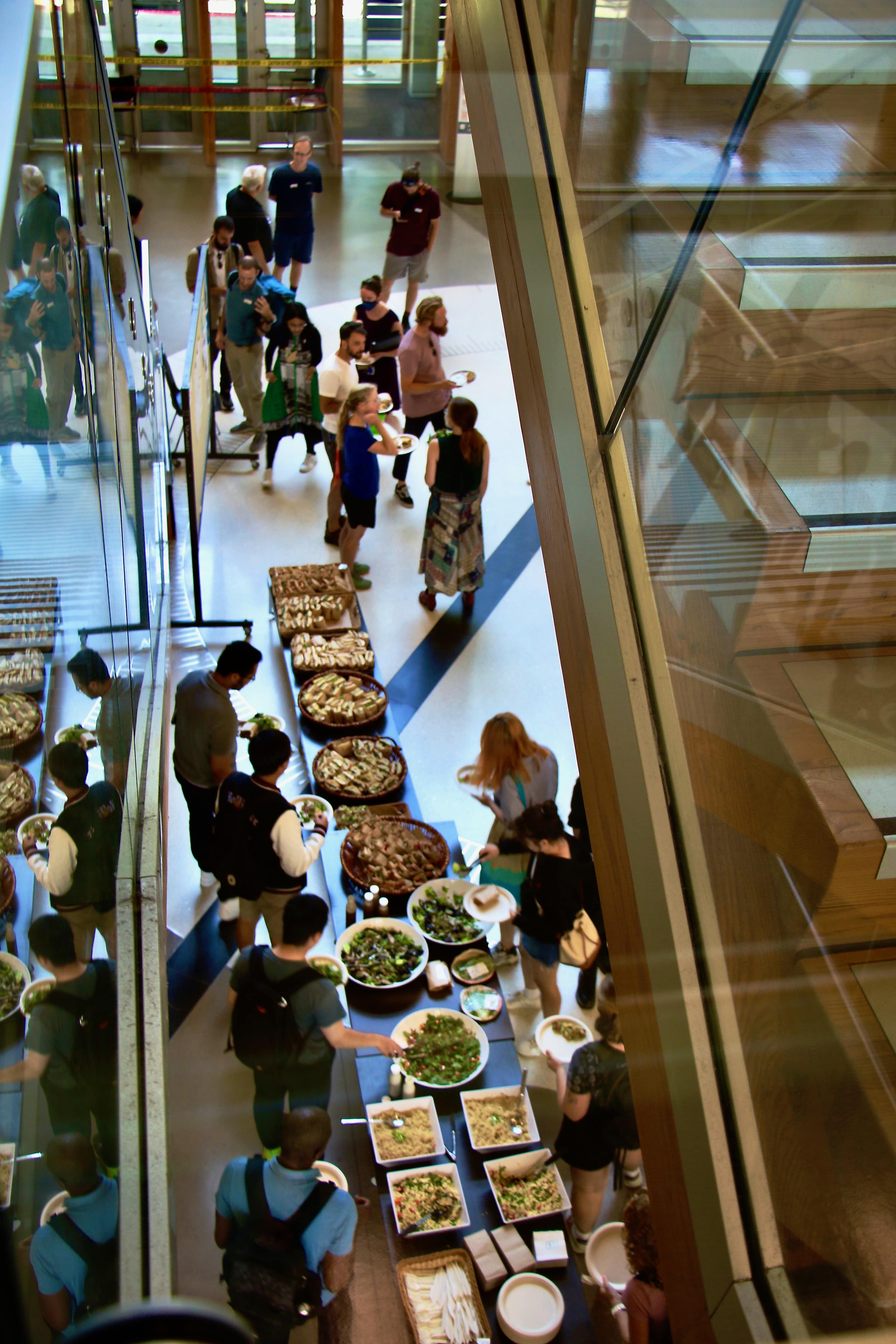
September 27 - Teaching & Learning in Science through the lens of Indigeneity, Equity, Diversity and Inclusion
Talk Matters: Investigating the Nature of Non-Content Classroom Language - Instructor Talk - that May Mediate Student Inclusion, Engagement, and Learning
When: Tuesday, September 27, 12:30pm–2:00pm
Where: Online via Zoom (Please pre-register here: https://ubc.zoom.us/meeting/register/u5Ypdu-ppz4uGdwuTPEDIWuSwklc_YSnj2CP)
Abstract: Through the language they use, instructors create classroom environments that have the potential to impact learning by affecting student motivation, resistance, belonging, and self-efficacy. However, despite the critical importance of instructor language to the student experience, little research has investigated what instructors are saying in undergraduate classrooms. We systematically investigated instructor language that was not directly related to content and defined this as Instructor Talk. We identified five robust categories of Instructor Talk that can characterize ~90% of non-content language found in over 60 courses: 1) Building Instructor/Student Relationships, 2) Establishing Classroom Culture, 3) Explaining Pedagogical Choices, 4) Sharing Personal Experience, and 5) Unmasking Science. The remaining ~10% of instances of Instructor Talk in these settings were categorized as negatively phrased or potentially discouraging in nature. Attention to Instructor Talk in undergraduate classrooms may be key for instructors to create inclusive learning environments and promote student learning.
About the Presenter: Dr. Kimberly Tanner is a rotating Program Officer in the Division of Undergraduate Education (DUE) at the National Science Foundation, on leave from her position as a tenured Professor of Biology at San Francisco State University. Her laboratory – SEPAL: the Science Education Partnership and Assessment Laboratory – investigates what is challenging to learn in biology, how biologists choose to teach, and how to make equity, diversity, and inclusion central in science education efforts. As a Science Faculty with an Education Specialty (SFES), she is engaged in discipline-based education research, directs multiple K-16+ biology education reform efforts, and is deeply engaged in faculty professional development. She is a founding editorial board member and current Co-Editor-in-Chief of the leading journal in her field, CBE–Life Sciences Education (LSE). Trained as a neurobiologist with postdoctoral studies in science education, Dr. Tanner is a proud first-generation college-going student, accustomed to she/her pronouns, and proud mom of a jazz/rock drummer and an aspiring robotics engineer, both produced in partnership with her college sweetheart and biochemistry lab partner.
Note: We will also be hosting two 1-hour small group discussions with Kimberly Tanner that morning. If you are interested in attending one of these small group discussions, you can indicate this in the pre-registration and we will follow up with you.
For more details, please visit the Speaker Series: Teaching & Learning in Science through the lens of Indigeneity, Equity, Diversity and Inclusion
New EOAS Courses Respond to Climate Emergency
“With the interdisciplinary nature of the courses—combining students from different degree backgrounds and years and community partners from outside the university—students will work together to put what they learn into action.” – UBC Science
EOAS has been committed to and playing an active role in bringing our research, teaching, operations and public outreach in solidarity with the UBC Declaration on the Climate Emergency. As part of the great team of faculty and staff from UBC Science and Arts, we are pleased to offer the now approved Certificate in Climate Studies and Action, and a series of Climate Action Labs (ENVR 201-402) that address pressing climate issues, which are open for registration to all students across UBC.
“The students will go through a series of workshops at the beginning of the class to prepare them for the work that they’ll be doing,” says Dr. Tara Ivanochko (EOAS Associate Professor of Teaching; academic director of UBC’s Sustainability Hub). “In the second half of the class, they’ll develop proposals to address the challenge that a community partner has given them. Some of the proposals will be selected to move on to the climate capstone course that follows.”
Read the full UBC Science article: New courses at UBC tackle real world problems
Learn more about the Certificate in Climate Studies and Action
Do you know we have a place on the EOAS website dedicated to Climate Crisis, including our actions, research, climate-related courses, undergraduate projects, etc? Visit here: Climate Crisis
Creating UBC's first student-curated museum
EOAS faculty Kirsten Hodge, Shandin Pete, Laura Lukes together with David Anderson in the Department of Curriculum & Pedagogy in the Faculty of Education have teamed up to build a brand new graduate course in EOAS that will focus on science outreach and communication through the lens of informal learning spaces such as science centers and museums. The project is called SCI-LEnS or Student-Curated Informal Learning & Engagement Spaces and was funded through UBC's Teaching and Learning Enhancement Fund. Hodge and her colleagues are working closely with student co-developers — Ruth Moore (EOAS Graduate Student), Raveen Sidhu and Oli Beeby (UBC 4th Undergraduate Students) — to construct the course landscape, which covers the fundamentals of science communication from understanding your audience to the art of rhetoric in science communication, a deep dive into the principles and practices for communicating science in museums, both self-directed and guided learning environments, as well as the use of digital and tradition media in communicating science stories.
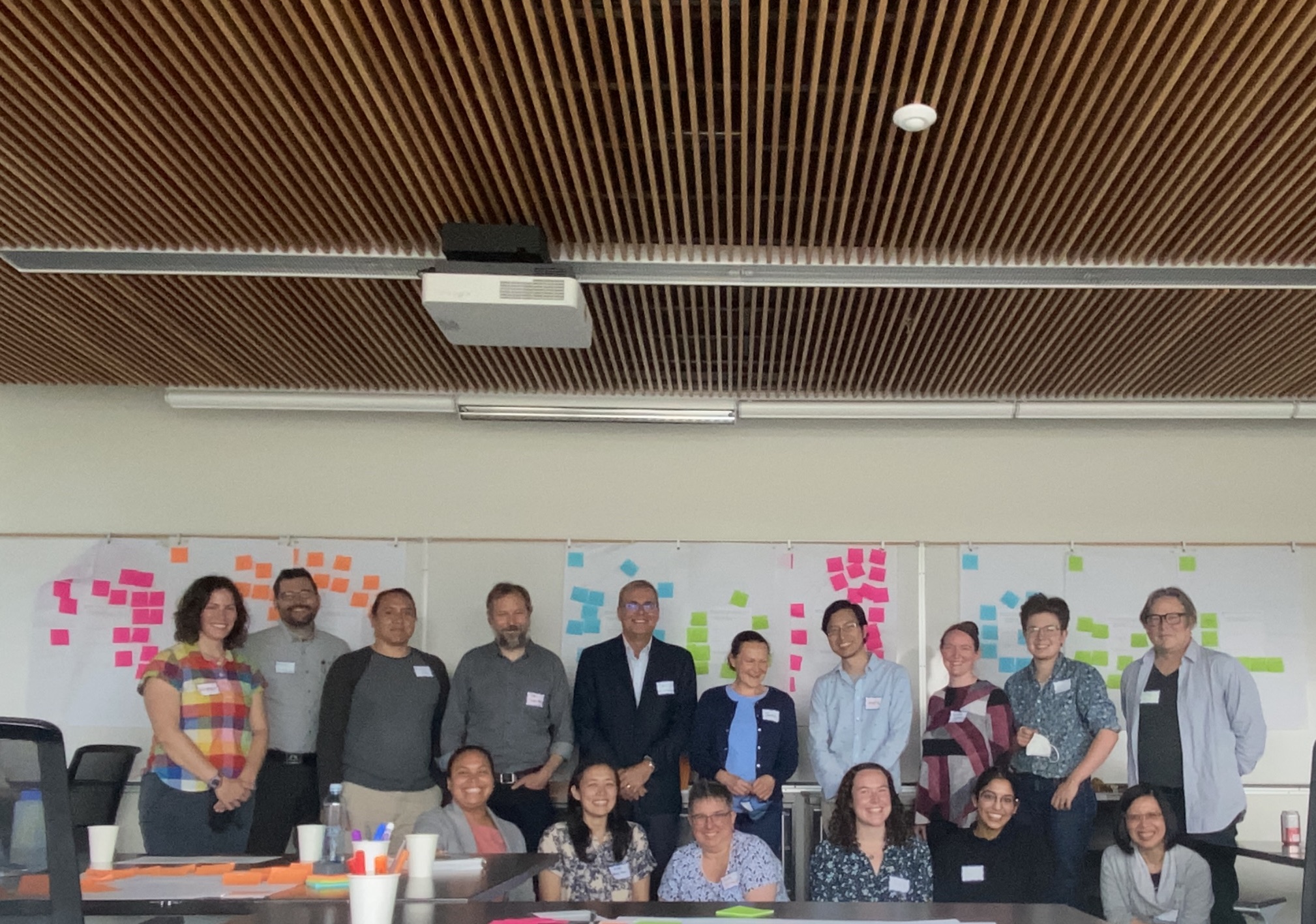
The SCI-LEnS team brings together local museum experts from the Museum of Anthropology, the Beaty Biodiversity Museum, Science World, and the Pacific Museum of Earth to collaborate on developing the course content. In mid-June, the project team met at UBC to refine the course goals and draft learning objectives for each of the course modules, further refining the course scope. This fall the project team plans to visit local museums to explore the course modules through specific exhibits and programs offered at each location.
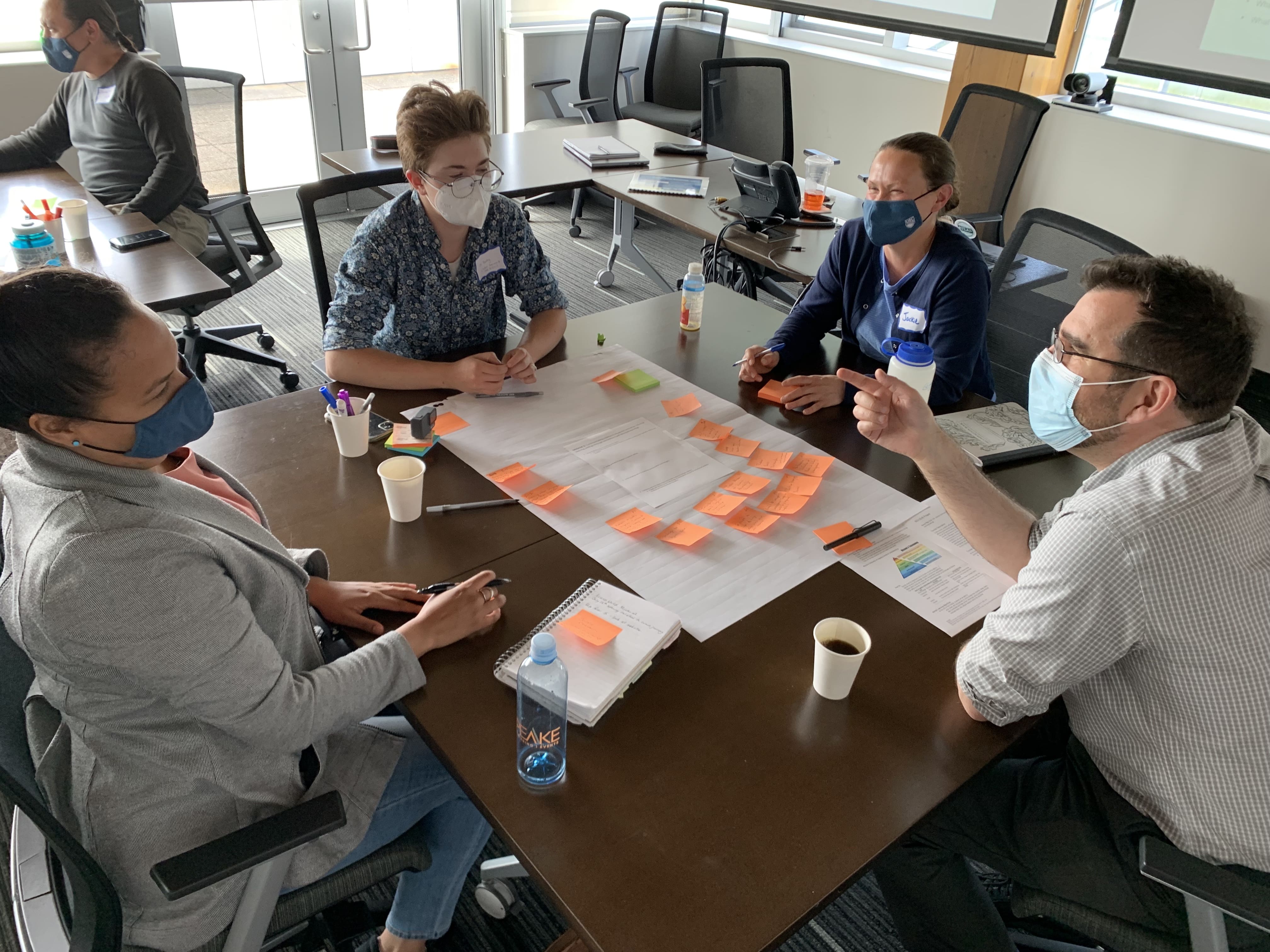
The course, which will be co-taught by Hodge and Lukes will be offered for the first time in January 2024. Students who enroll in the course will be immersed in the art of communicating science as they reimagine their delivery of complex, cutting-edge scientific phenomena not only to public audiences but also to students (K-12 and Tertiary), their future colleagues, and the broader scientific community. The course will provide experiential learning opportunities for students through the creation/curation of physical and virtual exhibitions in the Pacific Museum of Earth, Science World, Museum of Anthropology and the Beaty Biodiversity Museum. Hodge and Lukes plan to take an inquiry-based approach in which students will examine, investigate, design, peer-review and experiment with multiple approaches for mediating science stories in different settings.
One of the main outcomes of this project is to shift the Pacific Museum of Earth into a self-sustaining teaching/learning/outreach ecosystem in which the exhibit renewal and upgrades are inspired through the final course projects. Students will be tasked with designing an exhibit or public program that will then inspire upgrades to the museum’s exhibit space or public programming menu. This will ensure that the museum is presenting the most up-to-date science happening in EOAS and, over time, will transition the Pacific Museum of Earth into UBC’s first and only fully-student-curated museum.

